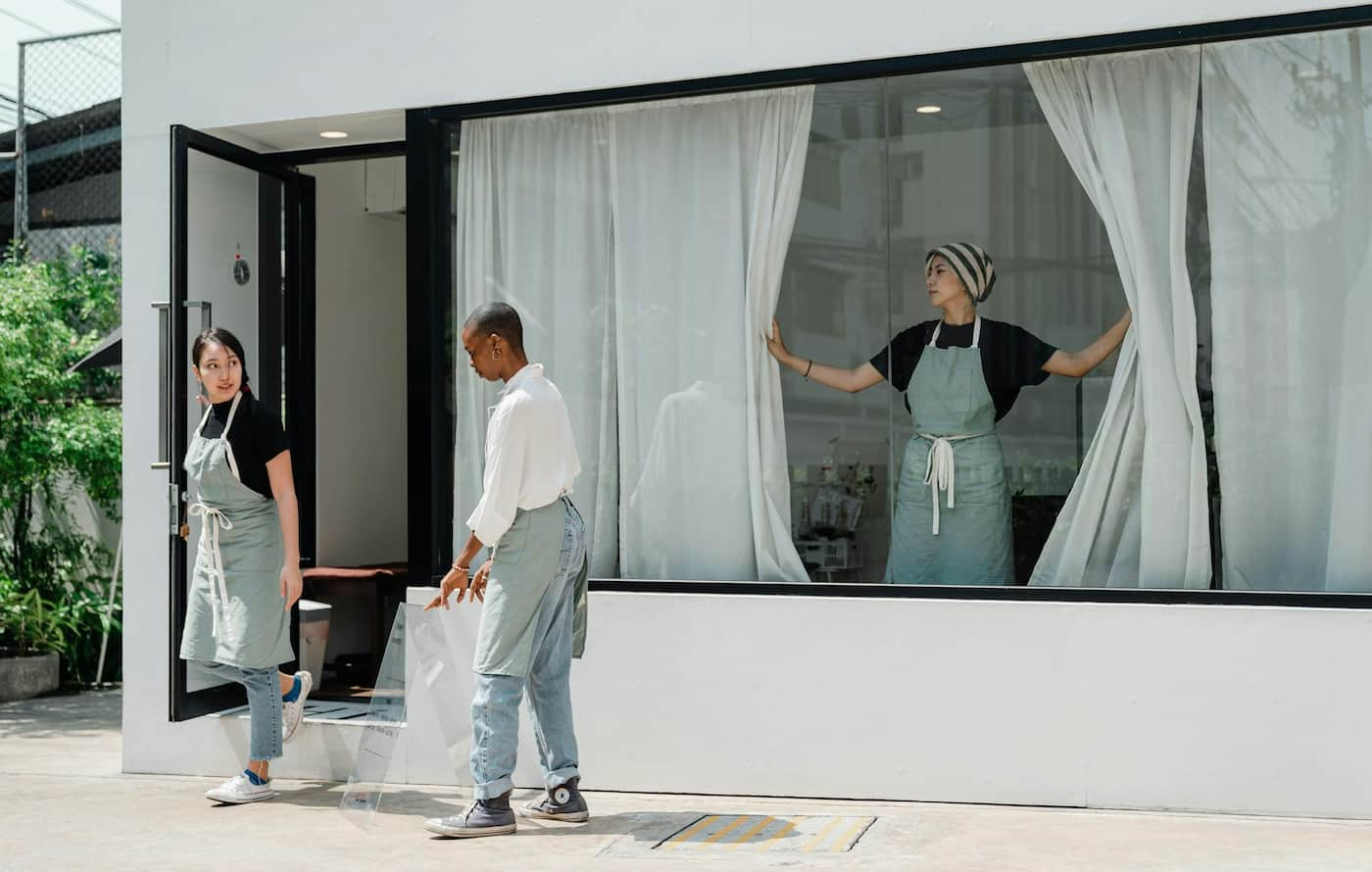How to open a restaurant in California
Editorial Team
5 min read
Home to stunning sunsets, sandy beaches, and snow-peaked mountains, California also boasts an incredibly diverse and immaculate food scene, featuring popular dining establishments like Nobu, Portos, and more. Starting a business in California is a great way to cement yourself in the industry, showcase your talent, and build a community.
Because starting a restaurant in California can require a lot of time, passion, and budget, we’ve prepared this opening a restaurant in California checklist on how to help successfully open a restaurant in the country’s golden state.
1. Determine the concept of your restaurant
There are over 68,000 restaurants in California, so it’s incredibly important to determine a unique concept that could help you stand out. Thriving businesses usually have a strong mission statement–short and compact statements that focus on the heart, values, and main goal of your business.
Your mission statement coupled with your concept will help characterize your businesses. If you’re unsure of where to begin, here are some questions that can help you narrow down the kind of restaurant you want to build:
- What kind of cuisine/food will you serve?
- Are you going to be a sit-down restaurant, a take-away joint, or offer a bit of both?
- What’s your target demographic/age range?
- How many business owners will be part of your restaurant?
- What kind of payment will you accept?
Identifying answers to these questions can help you zero in on the type of restaurant you want to open.
2. Have a general idea of your food/beverage menu
Figuring out the kinds of food and beverages you’d like to serve in your restaurant early on is smart, as certain ingredients may require special shipments/relationships with specific vendors. It will also give you an idea of the budget you require for your restaurant. Be sure to outline costs so that you can refer to them if you need to get financing.
3. Determine the location of your restaurant
A thriving restaurant needs space to live and grow. To figure out a good location for your restaurant, consider the following:
- Which city/county/neighborhood do you want your restaurant to be?
- What’s your target market? Who’s your prospective customer?
- Does the location have any specific tax requirements? Generally, the restaurant tax in California is 7.25%. However, specific counties/cities have additional taxes. Los Angeles, for example, has a 2.25% county restaurant tax.
Zeroing in on your desired location can also help you determine how much you may need to finance your business.
4. Research the California business licenses and permits you might need
Every restaurant in the state needs a business license and various permits in order to operate, so it’s important to determine what permits do you need to sell food in California and how to obtain them sooner rather than later. Following is a list of some of the licenses and permits needed to open a restaurant in California:
- A Federal Employer identification number, which connects you to the Internal Revenue Service for paying federal taxes.
- Registration with the California Department of Tax and Fee Administration (CDTFA). This is where you’ll acquire most of your permits.
- A local business license from your local city/county. Learn more here.
- An alcohol permit from the Department of Alcoholic Beverage Control.
- A building/construction permit from your local county/city’s building department.
- A food facility health permit.
Check out this guide to general permits and licenses and the California Secretary of State website for state-specific permits. Do keep in mind that obtaining these permits/licenses takes time, so you should start the process to acquire them as soon as possible.
5. Source financing for your business
The cost of starting a restaurant in California varies, of course, depending on the type of establishment you’re considering. In a nutshell, the cost can range anywhere between 200k to 900k.
You can determine how much you need to open a restaurant in California by factoring these types of costs: down payment or lease for your space, remodeling, permits and licenses, equipment and furniture, POS system, branding and marketing, and staff training.
Most new restaurant businesses pursue financing like Small Business Administration (SBA) loans. The SBA offers a variety of scholarships for owners underrepresented in the industry, which you should apply for if you can.
While the figures may be daunting, don’t let it scare you. This guide on how to open a restaurant on a budget can help.
READ: List of essential equipment needed to start a restaurant
6. Hire and train employees
Hiring and training the right staff will help your business succeed. When hiring, remember that California requires all employees to have a food handler card within 30 days of employment.
The following guides can help you manage staff efficiently:
- How to set up a rotating schedule for staff
- How to set up an effective pay for staff
- How to leverage software for effective employee management
7. Set up a POS system to help you with marketing and management
Having the right POS system for your restaurant’s needs can help it thrive. Clover’s POS is a powerful system designed with restaurants in mind and can help you manage payments, your kitchen, and even customer engagement. Be sure to take a look at this guide for the best ways to use a POS.
Effective marketing is integral to your restaurant’s success. Learning how to write a marketing plan, drive customer loyalty, and track your restaurant’s performance are a few ways you can help your business flourish.
While getting a restaurant up-and-running can be demanding, a Clover POS is designed to help entrepreneurs jump start, manage, and grow their businesses. To learn more about how Clover’s suite of tools can help your restaurant succeed, reach out to a Clover Consultant.
Related Posts
Full Service Restaurants (FSR)
How to conduct alcohol server training: A guide for restaurants and bars
Operating expenses 101 for small businesses
Popular Topics
Stay in touch
Sign up and learn more about Clover.
Thank you for your subscription!
More posts about starting a small business
eBook





